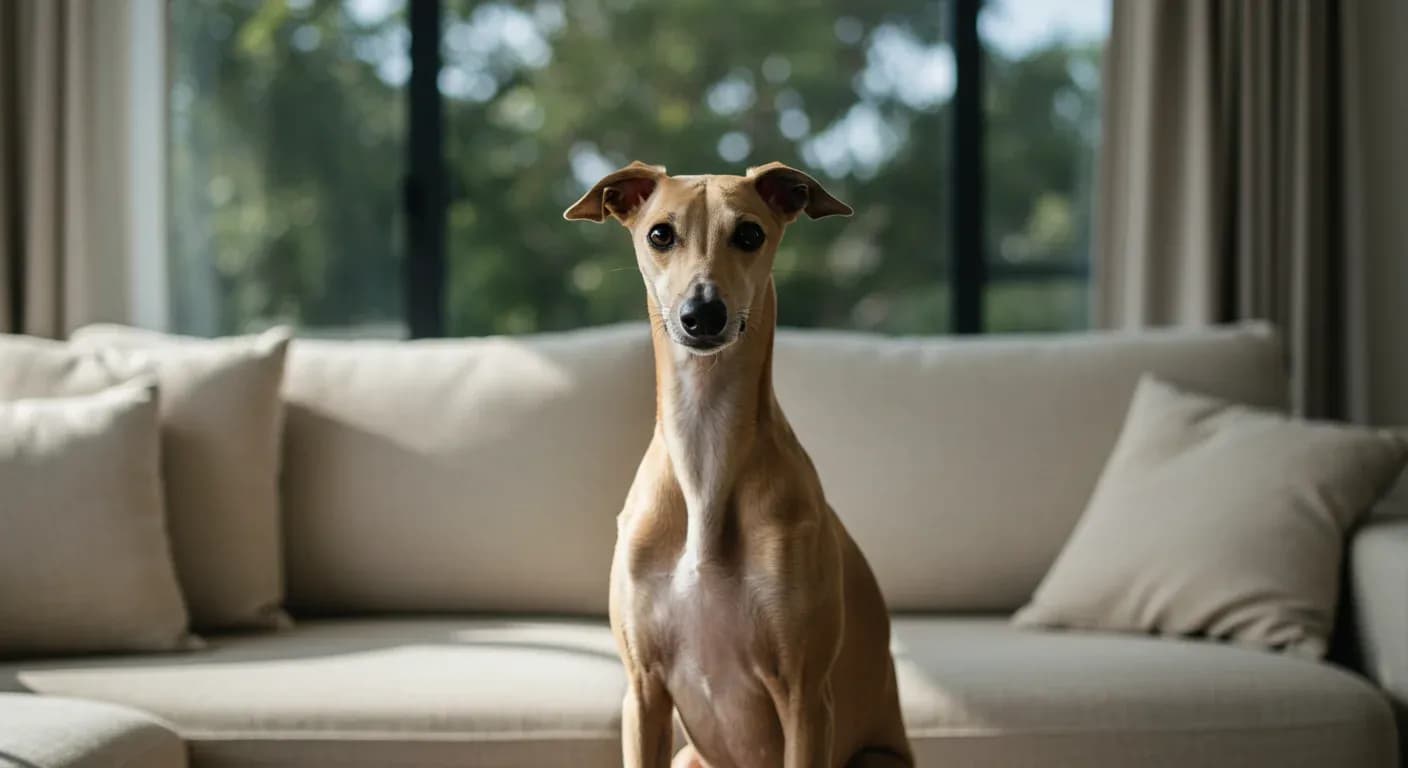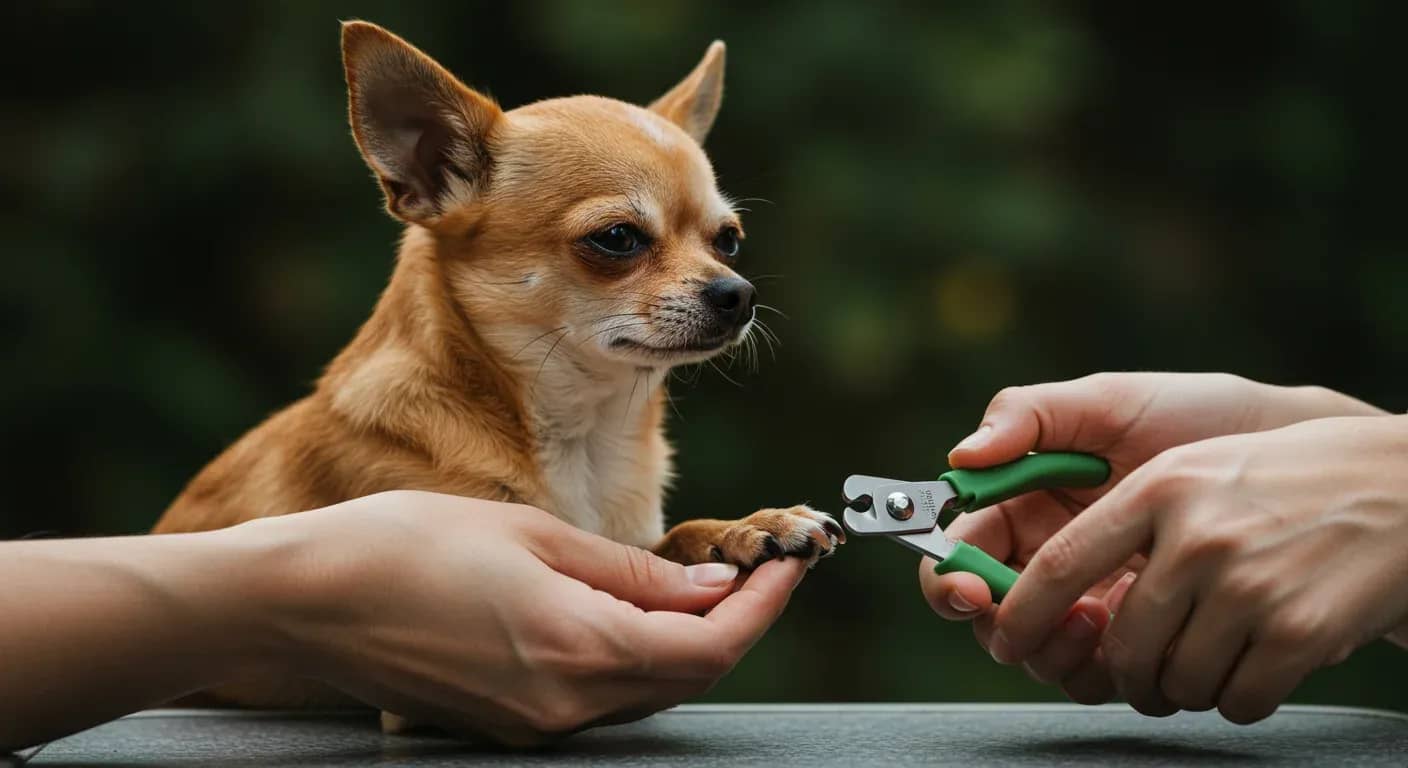At a glance
- Whippets are particularly prone to separation anxiety due to their sensitive nature and strong attachment to owners
- Key symptoms include pacing, vocalising, destructive behaviour near exits, and inappropriate elimination
- Management requires gradual desensitisation, environmental enrichment, and consistent routines
- Improvement typically takes weeks to months of consistent training and may require professional help for severe cases
Why Whippets struggle more with being alone
You might notice that your Whippet follows you from room to room, rarely choosing to settle in another part of the house. This isn't just affection. These dogs form exceptionally strong bonds with their families, making them more vulnerable to separation anxiety than many other breeds.
Their history as companion animals and gentle temperament means they often experience distress more acutely when left alone. Unlike more independent breeds, these dogs thrive on close human contact and can become genuinely distressed when that connection is broken, even temporarily.
Changes in routine hit them particularly hard. Moving house, shifts in your work schedule, or losing a family member can trigger anxiety responses that might surprise owners who've never seen this behaviour before. Their sensitive nature, while making them wonderful companions, also makes them more reactive to environmental changes.
Recognising the warning signs

Many Whippet owners worry when they start noticing subtle changes in their dog's behaviour before departures. The anxiety often begins before you even leave. Your dog might start following you more closely when you pick up keys or put on shoes, showing they've learned to anticipate your departure.
The most obvious signs occur during your absence. Pacing, whining, and barking are common, but destructive behaviour tells a more specific story. Dogs with separation anxiety typically focus their destruction near doors and windows, trying to reach you rather than simply being bored or mischievous.
House soiling despite previous training is another red flag, particularly when it happens only during absences. You might also notice drooling, excessive panting, or depression-like symptoms. Some dogs become restless for hours, unable to settle even when exhausted.
Building independence gradually
The foundation of managing separation anxiety lies in teaching your dog that being alone is safe and temporary. Start with absences so brief they barely register. Step outside for thirty seconds, then return calmly without making a fuss.
Gradually increase these practice sessions over several weeks. Most dogs respond well when you extend the time slowly, perhaps adding a minute or two each day. The key is staying below your dog's anxiety threshold. If they're showing distress, you've moved too quickly.
Establish consistent departure and arrival routines, but keep them low-key. Dramatic goodbyes and excited hellos actually increase anxiety by making your comings and goings seem like major events. Instead, ignore your dog for a few minutes before leaving and after returning until they're calm.
Creating a calming environment

Environmental enrichment can make the difference between a dog that copes and one that struggles. Interactive toys and puzzle feeders give anxious dogs something productive to focus on during your absence. Choose items that take time to complete but aren't so challenging they create frustration.
Background noise often helps. Leaving a radio or television on provides familiar sounds that can mask outside noises that might trigger anxiety. Some owners find classical music or programmes designed specifically for dogs particularly effective.
Consider creating a designated safe space where your dog feels secure. This might be a crate if introduced positively, or simply a comfortable area with their favourite bedding. The goal is giving them a retreat where they can settle when feeling overwhelmed.
The exercise and mental stimulation factor
A tired dog is generally a calmer dog, but the type of exercise matters. These dogs need both physical activity and mental challenges to feel satisfied. A quick walk around the block won't address the energy levels of a breed bred for speed and endurance.
Plan substantial exercise sessions before longer absences. A good run or extended play session can help your dog settle more easily when you leave. However, avoid exercising immediately before departure, as this can create an association between intense activity and your leaving.
Mental enrichment is equally important. Training sessions, scent work, or problem-solving games tire the mind as effectively as physical exercise tires the body. A mentally stimulated dog is more likely to rest peacefully during your absence.
When to consider companionship
These dogs are naturally social and often benefit from canine companionship. Having another dog can provide comfort and reduce the intensity of separation anxiety, though it's not a complete solution on its own.
If you're considering adding a second dog, ensure your current dog has some basic independence skills first. Two anxious dogs can actually reinforce each other's distress, making the problem worse rather than better.
The new companion doesn't need to be the same breed, but should have a calm, confident temperament that can help model relaxed behaviour during your absences.
Professional help and medical options
Sometimes behavioural interventions need additional support. If your dog shows signs of severe distress, self-injury, or if destructive behaviour leads to property damage or injury, it's time to consult a veterinary behaviourist or certified trainer experienced with separation anxiety.
Video monitoring can help professionals assess exactly what happens during your absence. Many behaviours that owners assume are separation anxiety actually have different causes, and proper assessment ensures appropriate treatment.
Medical interventions might include anti-anxiety medications like trazodone or fluoxetine, which can support behavioural therapy. Calming products such as pheromone diffusers or anxiety wraps provide additional relief for some dogs. Your veterinarian can help determine which options might benefit your specific situation.
Improvement typically requires weeks to months of consistent work. Early intervention significantly improves the prognosis, but even established anxiety can be managed effectively with patience and the right approach. Complete resolution isn't always possible, but most dogs can learn to be comfortable and safe when left alone.



